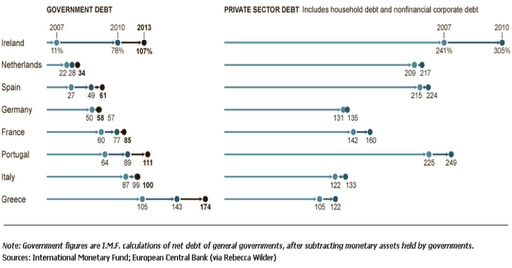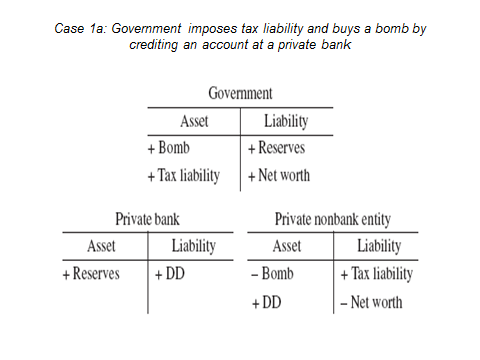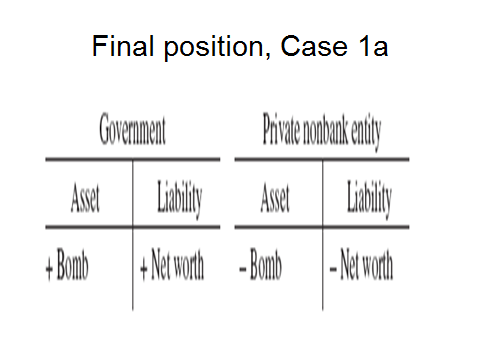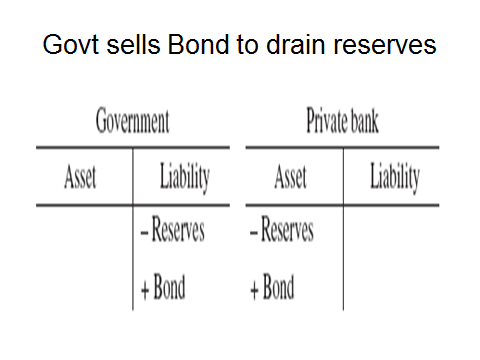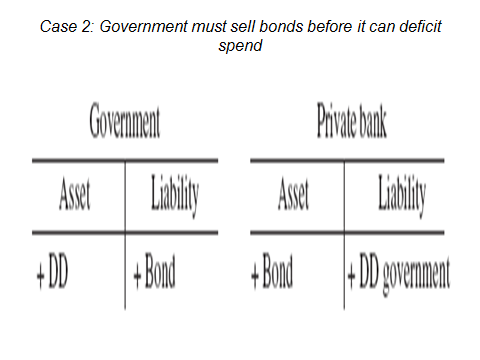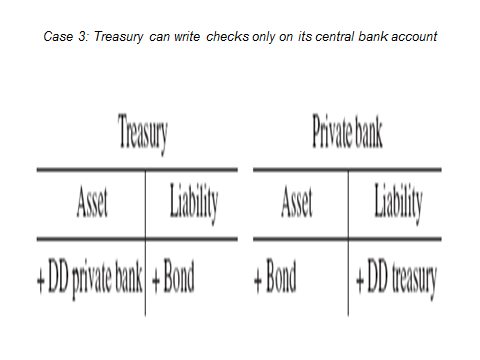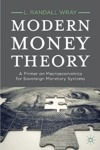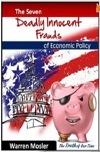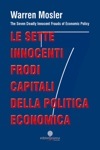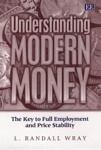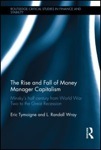By Dan Kervick
Reflections on Modern Money
Before considering what it would mean to make our monetarysystem more democratic, let’s begin by calling to mind a few familiar featuresof money and modern monetary systems in general, features we all intuitivelyunderstand as users of money in a modern monetary economy.
First, money obviously comes in very different forms. Not only are there different currencysystems – the dollar system, the euro system, the renminbi system, etc. – buteven within a single system, money can take significantly different forms. There is all of that familiarpaper and metal currency, consisting of tangible objects that can be physicallytransported from one hand to another, and that are denominated with differentface values. But money might alsoexist simply as “points” electronically credited to someone’s digital monetaryscorecard at a bank. These pointsare debited from and credited to various accounts, and need never be exchangedfor physical currency. We can already see a near future inwhich the traditional material currency of metal coins and paper notes will nolonger be used. In thinkingabout our modern monetary system, then, it is useful to think of it as anetwork of such monetary scorecards. And we can think of the exchange of physical paper andmetal currency as just one among several ways of adding and subtracting pointsfrom the monetary scorecards of those who exchange the money. Each individual possess such ascorecard, but so do businesses, governments and other organizations.
Conceiving of our monetary transactions in this way iscompatible with the intellectual framework developed by Hyman Minsky, who said,“A capitalist economy can be described by a set of interrelated balance sheetsand income statements.” However, the world of balance sheets Minsky asked us to describe containsmore than just money. Thesebalance sheets record the ownership of other financial assets – that is,promises or commitments of money rather than money itself. And they also contain accounts ofreal assets – items of positive valueto their owners, like cars or buildings or a book collection – that are notfinancial assets. Finally, thebalance sheets are also accounts of liabilities– things that represent negative value to their owners, such as debts thatlegally commit the owner of the debt to an outflow of wealth over time.
A second thing to note about modern monetary systems is thatthe market value of these exchangeable monetary points lies, for all of their users,purely in their exchange value. That is, the only value that attaches tothe acquisition and possession of money comes from the knowledge that money canbe exchanged for other things. It is true that people also seek to acquire money as a “store of value”that they save for indefinite periods and have no definite plans to spend. But the only reason one can besuccessful in storing value when onesaves money is that other things continue to happen out in society that preservethe use of that money as a medium of exchange. If at any time people became unwilling to accept thatform of money in exchange, the saver would no longer be storing value when theysaved their money, but valueless points on a meaningless scorecard.
The fact that the value of modern money is purely based onits acceptance in exchange makes money different from all of the non-monetaryitems that we accumulate and exchange. Non-monetary items of valuealways have a direct practical utility, for at least some significant number ofpeople, a utility that is not dependent on the prior exchange of those itemsfor something else. Theutility might be realized in consumption, as it is with a bar of chocolate, or inthe production of some other product or service, as with a block of iron. It is true that for some specificpeople, the entire value of some non-monetary object might derive from theprospect of exchanging that object for something else. So, for example, I might be aphilistine art collector who buys paintings only to store value over time andperhaps exchange them later for the things I really want. For me, paintings function as something like money. But I can use paintings in thispurely mercenary way, as merely something to exchange for something else, onlybecause there are other people wholove paintings for their own sake. Similarly, I might be a prisonerwho trades goods for cigarettes, even though I don’t smoke, but only becausesome other prisoners do smoke, and are willing to give something up for thecigarettes. But money isdifferent altogether. What makes acertain good a form of money is that its value for pretty much everyone lies entirely in the fact that others willaccept it in exchange. There is nonon-monetary, non-instrumental foundation for the exchange value of money. There might be a few dementedmisers with a perverse love for paper bills and metal coins themselves, and afew numismatic hobbyists who collect these bits of money as culturalcuriosities and works of art in themselves. But the exchange value of money does not depend in anysignificant way of the existence of this relatively small number of people.
Thirdly and finally, it is clear that governments play avery important role in the regulation of contemporary monetary systems, and inthe creation and destruction of the monetary units in that system. The monies we use have an official,legally institutionalized role in our economies, an official status that isadvertized to us by the markings and declarations on the physical currencyitself. Almost all money in actualwidespread use is some government’s money. The government is central in preserving the value andstability of the government’s money over time. And we know that while we all have a great deal ofliberty to exchange the money we personally possess for other good andservices, and to exchange goods and services for money, the legal authority tocreate and destroy the official government money is tightly regulated andprotected. It is to suchofficial, government administered monetary systems – at least when they existin democratic societies – that I refer when I describe a monetary system suchas the dollar system as “the public’s money.”
But how do those governmental monetary processeshappen? How is the monetarysystem stabilized over time? How is money actually created and destroyed in a modern monetary economy? The full answer to these questions is not simple. Governments are complex entities,consisting of many separate branches, divisions, departments and agencies, eachwith its own assigned powers and authorities, and many distinct operationalcenters have their hands on different aspects of the monetary system. The private sector plays a key role as well. My focus will primarily beon the processes that create and destroy money. We can put off the precise details of government monetaryoperations for now, and start instead with a simplified model. I will call the government in this simple model a “monetarilysovereign government”, or just a “monetary sovereign”.
Monetary sovereigns can come in different forms, but in ademocracy the people as a whole are supposed to be the ultimate seat and sourceof the government’s sovereignty, including its sovereignty over monetaryoperations. Think of the monetarysovereign, no matter what individual or group of individuals constitute andexercise that sovereignty, as possessing a single monetary account of its own -a single unified monetary scorecard. Initially, the monetarysovereign’s scorecard can be thought of as very much like anyone else’smonetary scorecard. When themonetary sovereign spends, and either buys something from someone in theprivate sector or transfers money outright to the private sector, some monetarypoints are deducted from the monetary sovereign’s scorecard and an equal numberof points are added to that private sector scorecard. And going in the other direction, when the monetarysovereign taxes, or when someone purchases some good or service from agovernment agency, some monetary points are deducted from the private sectorscorecard and an equal number of points are added to the monetary sovereign’s scorecard.
But there are two wrinkles, two special circumstances thatmake the monetary sovereign’s scorecard very different from private sector scorecards.
First, the monetary sovereign is the seat of government, andhence the ultimate administrator of its own scorecard. If you and I exchange money, andthe exchange takes place via our bank accounts, the banks that oversee theseaccounts administer the adjustment of the monetary points on ourscorecards. And if two banks exchangemoney, the government, which operates a central bank that serves as a sort ofbank for bankers, administers the adjustment of monetary points between the twobank scorecards. But when amonetary exchange takes place between the monetary sovereign and any other personor entity in the private sector, the monetary sovereign is the ultimateadministrator or arbiter of the monetary adjustment. The monetary sovereign’s scorecard is not administered bysome third party, but by the monetary sovereign itself.
It is true that the scorecard of some agency within the government might beadministered by some other agency of the government. In the US system, for example, the Treasury Department’smonetary transactions are administered by the Federal Reserve System, whichholds the Treasury Department’s accounts. But the Fed is ultimately part of the government, which means that theUS government as a whole is the ultimate administrator of the government’s ownaccounts.
The other way in which the monetary sovereign’s monetaryscorecard is different from a private sector scorecard is connected with thefirst difference: A monetarilysovereign government reserves for itself the power of adding or deleting monetarypoints on its own scorecard or any other scorecard, at its own discretion, withoutany requirement that an equal number of monetary points are debited from anyother scorecard or credited to any other scorecard. And the monetary sovereign uses its power to guarantee thatit is the sole entity in the monetarysystem that possesses such power. The monetary sovereign, in other words, wields the exclusive power tocreate and destroy money in the monetary system it controls. Currency users in the private sector, on the other hand, canonly exchange monetary points in waysthat make the books balance. Tothe extent that agents other than the monetary sovereign are permitted toengage in money-creating and money-destroying operations, these operations takeplace only with the permission of the monetary sovereign, and under theguidance or supervision of the monetary sovereign.
There might appear to be one partial exception to the aboverestriction, however. Privatesector banks are also permitted, within certain limits, to create new monetarypoints in the monetary system. When a bank decides to give a loan to some new borrower, it creates adeposit account for that borrower and credits the loaned amount of dollars tothat account. In effect, itcreates a new monetary scorecard for the borrower and puts some monetary pointson it. As the economistsBasil Moore, Scott Fullwiler, Marc Lavoie and many others have emphasized, thosepoints need not come from anywhere. They need not be the result of a transfer of points from some otheraccount to the borrower’s account. Although the bank might be subject to central bank reserve requirementsthat mandate the bank hold a certain percentage of money against its deposits,in its reserve account at the central bank, the bank typically has severalweeks to meet these requirements, and can acquire the reserves after making the initial loan, eitherfrom other banks or from the central bank itself.
So bank lending can in some sense create additionalmoney. However, in a verystrict sense, what the bank borrower receives is not monetary points, but a promise of monetary points to bedelivered in the future. Thatpromise is a liability of the bank – something it now owes the borrower and thatthe borrower can convert into money on demand. If the borrower decides to withdraw the promised money inthe form of material currency, the bank must take cash from its vault and giveit to the borrower. At thispoint, we can see an actual transfer of money from the bank to theborrower. But the bank’s vaultcash has to be acquired from the monetary sovereign, and it has to pay for thatcash.
Now since bank deposits can be exchanged just about asfreely as money in any form, they can be legitimately defined as one form ofmoney itself. There is perhaps nostrict line that can be drawn between liabilities for money or promises ofmoney, on the one hand, and money itself, on the other hand. But ultimately, however we define“money”, all of these banking operations are administered and regulated by themonetary sovereign, and so the monetary sovereign’s decisions are ultimatelyresponsible for which lending operations a bank is permitted to conduct, and whetherthe bank’s lending results in a net increase in money in the monetary system. The monetary system is under theultimate control of the monetary sovereign, even if the sovereign chooses not to be very assertive inexercising that control, and passively allows banks to create money as they seefit.
So let’s return to the operations of the monetary sovereignitself. In order tobring the nature and ultimate capacities of monetary sovereignty into sharperrelief, let’s consider three distinct models or mental pictures of the monetarysovereign’s monetary operations. These mental pictures are designed only toprovide a more vivid imaginative understanding of monetary sovereignty. And initially at least, theymight appear to be dramatically different pictures. But we will see that in the end the pictures are,somewhat surprisingly, fully equivalent in everything that is really essentialand important about the monetary sovereign’s operations.
The first picture can be called the infinite account model. Think of the monetary sovereign as possessing an account or monetaryscorecard that holds an infinite quantity of dollars. When it spends in its unit of currency, it credits someamount of units X to some private sector account, but debits X units from itsown account. When it taxes,it debits X units from some private sector account, but credits X units fromits own account. But sinceit possesses infinitely many units of the currency in the first place, theseoperations have no effect on its own balances. Currency units come in and go out, but the addition orsubtraction of a finite number of units from an infinite stock of units nevermakes any difference. The sameinfinite number of units exists on the monetary sovereign’s scorecard at alltimes.
A second picture is the emptyaccount model. In this case, thinkof the monetarily sovereign government as possessing an account that containsno money whatsoever. Its scorecard always stands atzero. When it spends, it credits Xunits to some private sector account, but makes no change at all in its ownaccount. When it taxes, itdebits X units from some private sector account, but again makes no changes atall to its own account. Since it never possesses any money on its books, the monetarysovereign’s basic monetary operations of taxing and spending can be viewed as simplycreating private sector monetary points out of thin air and destroying privatesector money, not transferring that money back and forth between the privatesector and the government. On the empty account model, only private sector monetary scorecards aremarked up with monetary balances, and the monetary sovereign never possessesmoney of its own.
Finally, there is the quotidienaccount model. The monetarilysovereign government is seen on this model as always possessing a finite amountof currency units – just like a private sector entity. At all times, some finite number of monetaryunits are on its monetary scorecard, and the monetary sovereign running a quotidienaccount is scrupulous about balancing the books on its monetaryoperations. When it spends,it credits X units to some private sector scorecard, but scrupulously debits X unitsfrom its own scorecard. Whenit taxes, it debits X units from some private sector scorecard, but againcarefully credits X units to its own account. Since it possesses only finitely many units in thefirst place, these operations do have an effect on its balances. However, there is one added wrinkle:the monetary sovereign is, as before, legally entitled to create or destroycurrency units on its scorecard as a separate operation. So in the end, while there arealways some finite number of units on its scorecard, the monetarily sovereign governmentultimately chooses exactly how many unitsthat is, since it can add or subtract units from its own scorecard at any time. Even though the sovereign’sbookkeepers are scrupulously balancing the books when it comes to recordingexchanges to and from the private sector, the fact that the government can atany time credit or debit some additional amount makes the bookkeeper’s caresomewhat absurd or meaningless, at least with regard to the monetarysovereign’s own account.
Recognizing that degree of meaninglessness in the quotidien accountmodel is the key to grasping a very fundamental fact about monetary sovereignty. When it comes to understanding the realeconomic effects of the monetarysovereign’s operations, it really makes no difference whatsoever which picture oneemploys. The three picturesare all equivalent. If themonetary sovereign is entitled to create or destroy currency units at will, it reallydoesn’t matter whether we imagine the sovereign as possessing infinitely many units,zero units or some finite number of units of its own choosing. All that matters is what happensto the accounts in the non-governmental sector. The monetary sovereign administers the monetary systemof the real economy, and that real economy consists of the sphere of goods andservices that are produced and exchanged by the world outside of thegovernment, a world in which the government’s money plays the role offacilitating exchange, accounting for value in a standard unit of measure andmaking payments. Since thosepeople and entities in the private sector economy are not permitted to create currencyunits at will, unless such power has been delegated to them by the monetarysovereign, their spending and savings decisions are constrained at any time bythe number of units they possess at that time. And the rate at which money is exchanged for goods andservices depends ultimately on the amount and distribution of money that existsout in the private sector. Whatultimately matters, then, is whether some government operation has the effectof adding monetary points to some private, non-governmental sector scorecard,or deleting monetary points from some private, non-governmental sectorscorecard. What happens tothe sovereign’s own scorecard is insignificant with regard to the creation anddestruction of value in the real economy, that is, with regard to all of thethings we really care about.
Going forward, then, it will be good to use neutral terms todescribe the effects of the fundamental monetary operations of the monetarysovereign, terms which do not depend on which of the three models we use toconceive of these operations. We will say, then, that taxes “remove” money from the non-governmentalsector, and that government spending “inserts” money into the non-governmentalsector. The monetary sovereign possessesthe power of a government to make these things happen, and the insertion andremoval of money from various places in the private sector can have profoundeffects. But what happens behindthe accounting wall separating the monetary sovereign’s scorecard for all ofthe other scorecards makes no real difference to anybody. Whether one chooses to regard theinsertion of money into the economy as a transferof money – in accordance with either the infinite account model or the quotidianaccount model – or as the creation ofmoney from nothing – in accordance with the empty account model – really makesno difference to the effects of these operations in the private sector economy.
So far, I have discussed only two main kinds of governmentmonetary operations: taxing and spending. But I have neglected to discuss borrowing, another significantgovernment financial operation. How should we understand the borrowing operations of a monetarilysovereign government?
To answer this question, we should begin by asking what wemean by “borrowing” and “lending”, in the financial senses of those words. What does it mean to say someone has borrowed money from somebank lender? Well it isclear that we don’t mean quite thesame thing that we mean when we talk about other non-monetary acts of borrowing and lending in the everyday world. If my neighbor borrows mylawnmower from me, and I lend it to him, I simply hand over my lawnmower to himfor some more-or-less agreed amount of time. He uses it for a while, and then gives it back tome. End of story. The value of the lawnmower hasprobably depreciated just a tiny bit as a result of the use, and my neighborhas derived some value from the lawnmower for which he did not pay me. But if, instead of agreeing to lend him the lawnmower, I amonly willing to hand over the lawnmower for some more-or-less agreed paymentfrom my neighbor, we would probably say that my neighbor has then rented by lawnmower from me, notborrowed it. So in essence,my act of lending constitutes a modest neighborly gift on my part. I give the gift and my neighborreceives it. That’s all.
But clearly, that is not at all the way we are using theterms “borrowing” and “lending” when we apply these terms in the usual way tothe borrowing and lending of money. As we all know, abank loan is no gift! In the case of money, we are talkingabout an exchange or trade. When people borrow money, they acquire somemoney in exchange for a promise, a promise to pay some other amount of money inthe future – almost always a greater amount. The promise then represents a financial asset for thelender, and a financial liability to the borrower: it represents something thelender is slated to gain and the borrower is slated to lose. The financial instrument, thepromise, represents a cash flow. From the point of view of the lender, it represents an inflow ofmonetary payments, generally associated with a fixed payment schedule. From the point of view of the borroweron the other hand, the financial instrument represents an outflow of money onthe same more-or-less fixed payment schedule. A bond – suchas the bonds sold by businesses and governments – are essentially financialinstruments formalizing promises of this kind. In terms of a monetary scorecard, we can think of afinancial asset like a bond as something like some marks on the scorecard correspondingto a schedule of pre-determined point increases. The lender’s scorecard contains the bond as well as anypreviously existing monetary points the lender possessed. As any one of the various timesindicated on the schedule transpire, some marks indicating a scheduled paymentof currency units at that time are erased, and the appropriate numbers of actualcurrency units are added to the scorecard. Gradually what begins as a mere schedule of monetarypoints to be received in the future is transformed into some quantity of actualmonetary points.
People can also sell bonds that they have already purchasedfrom some other party. Suppose A has purchased a bond – a schedule of monetary payments – fromB. But suppose A no longerwants to wait for the promised money to be credited to her scorecard onschedule, and prefers some money now. Then A might be able to find somethird party C who is willing to buy the remaining schedule of payments fromA. A receives some moneyfrom C – that is, A’s monetary scorecard is credited by some amount and C’smonetary scorecard is debited by some amount. Now B still owes the remaining schedule of monetarypoints, but B now owes them to C. In accordance with the remaining schedule of payments, C’s scorecardwill be marked up with additional monetary points and B’s schedule will bedebited by that amount of points concurrently.
So, borrowing and lending money in financial markets doesnot involve any kind of gift. Itis an exchange in which each party gives something up and each party receivessomething in return. The borrowerreceives present money and in return gives up money in the future. The lender gives up present moneyand in return receives money in the future. Generally, people are only willing to make such an exchangeif it is mutually beneficial. It is important to keep the mutually beneficial nature of creditrelationships in mind. There is anunfortunate tendency in contemporary discourse about credit to regard thelender as a person who has bestowed some favor, gift or act of grace on theborrower. But that is notthe case. Rather, two peoplehave made a simple mutually beneficial exchange. One party to the exchange receives from the other some moneyin the present; the other party to the exchange receives from the other somemoney in the future.
But let’s return now to the case of a monetary sovereign,and look at these borrowing and lending processes from the perspective of amonetary sovereign’s operations, in line with any one of the three models wedescribed before. Start with borrowing. What are the effects of governmentborrowing from the non-government sector, at positive interest? Well, first, the private sector lender buys a bond from the monetarysovereign. At the time ofthe purchase, some monetary points are removed from the lender’s monetary scorecard,and a schedule of pre-determined monetary points is added to that scorecard. Then over time, some of the marksrepresenting pre-scheduled monetary points are removed and the appropriate numberof monetary points are added. These operations are likely to be very important to the private sectorlender. But remember that fromthe standpoint of the monetary sovereign it makes no difference what happens tothe monetary sovereign’s own scorecard. All that is important is what happens to the private sector scorecard:some money is first subtracted from the scorecard, and then some greater amountof money is added to the scorecard over time. And since that lender is part of the private sector, thegovernment in this case first removes money from the private sector and theninserts money into the private sector over time, on a pre-determined schedule.
Now what if, instead of borrowing from the private sector,the monetary sovereign lends to theprivate sector? We can understandthe effects of this operation by just reversing the time order and direction ofthe previously described borrowing operation. When the government lends to a private sector entity, somemoney is first added to that entity’s scorecard, and then some greater amountof money is subtracted from the scorecard over time. The government in this case first inserts money intothe private sector and then removes money from the private sector over time, ona pre-determined schedule. But remember again that from thestandpoint of the monetary sovereign it makes no difference what happens to themonetary sovereign’s own scorecard. All that is important is what happens to the private sector scorecard:some money is in this case first added to the scorecard, and then some greateramount of money is subtracted from the scorecard over time.
Now consider the monetary effects of several of thesemonetary operations together: taxing, transfer spending, borrowing andlending. Both money andofficial promises of money represent assets to the party that hold them. So the effect of these governmentmonetary operations is the swapping around of government-issued financial assetson private sector balance sheets. In each case, the monetary sovereign is mainly adjusting the scheduleson which it will insert and remove money from the private sector, and theaccounts on which it will make these changes. In some cases it adjusts a schedule of money removals andmoney insertions forward in time toward the present; in some cases it adjusts aschedule further off in time toward the future. It is likely engaging in a large and complexcombination of such adjustment operations at any time. All of these adjustments helpregulate the flow of additional money into and out of the private sector.
Think of it this way: The private sector can be imagined as a collection of wells, and eachwell is outfitted with a collection of nozzles to which one can attachhoses. Each hose either drawswater out of a well and into the monetary sovereign’s well, or draws water outof the monetary sovereign’s well and into the private sector well. Some of the hoses carry a steady flowwhenever they are hooked up. Otherhoses are outfitted with valves that deliver their water flow in bursts, on aset time schedule. The monetarysovereign’s various monetary operations can then be seen to consist indetaching some hoses and attaching others, sometimes swapping out one hose foranother.
But just as before, remember that it doesn’t really matterwhat happens to the monetary sovereign’s own well. This is perhaps easiest to imagine if we think of themonetary sovereign’s well as infinitely deep – as in the infinite accountmodel. Water flows into andout of the monetary sovereign’s well. But these flows make no difference from the standpoint ofthe monetary sovereign itself, since the sovereign’s well is always infinitelydeep and filled with an infinite amount of water. But the flows of water make quite a bit of differenceindeed to the owners of the many ordinary wells out in the private sector.
This is Part Two of asix-part series. Part One is here.


